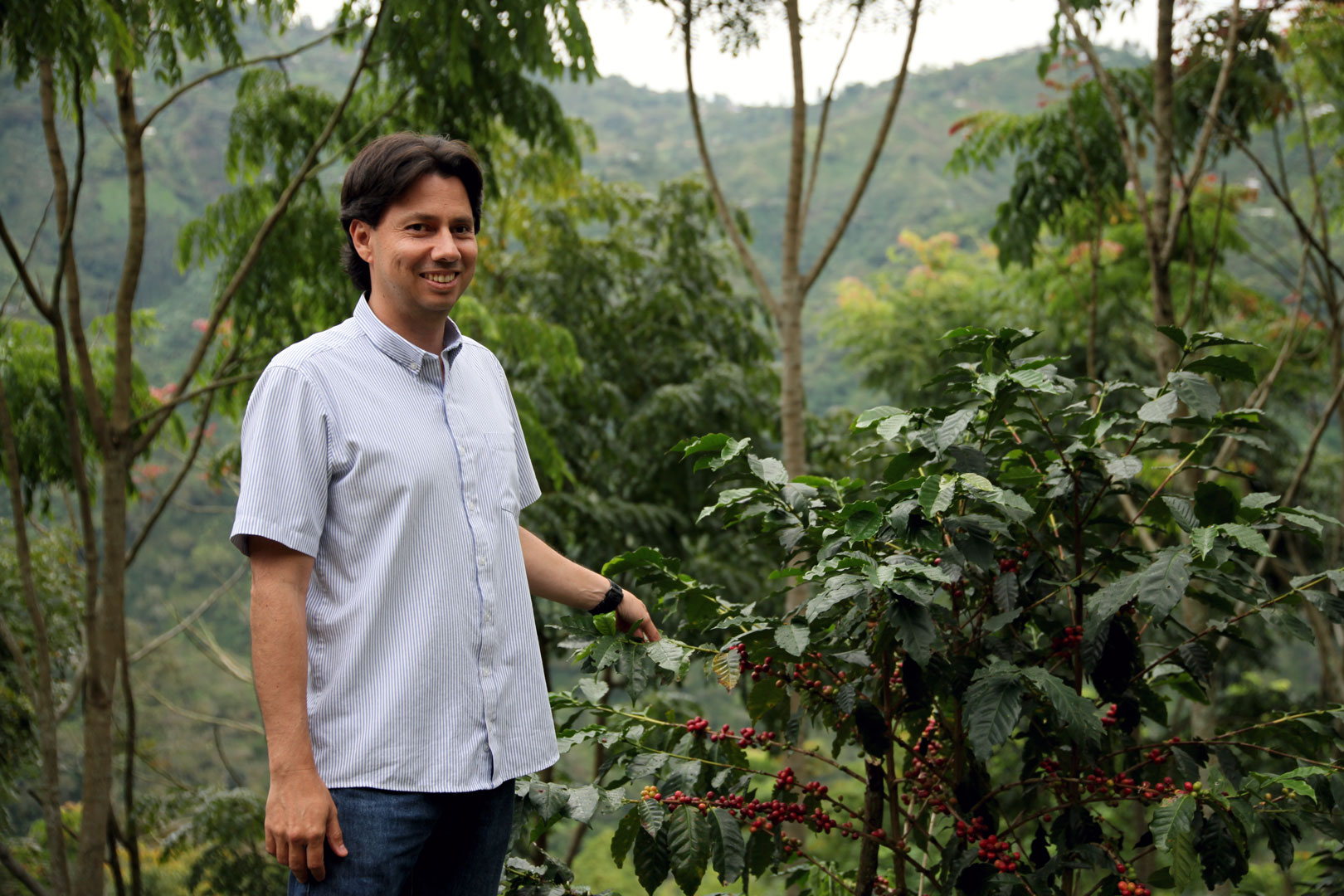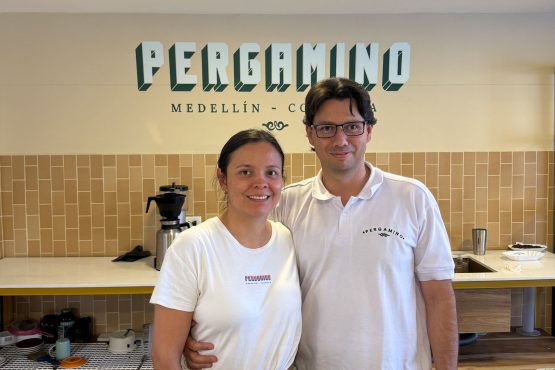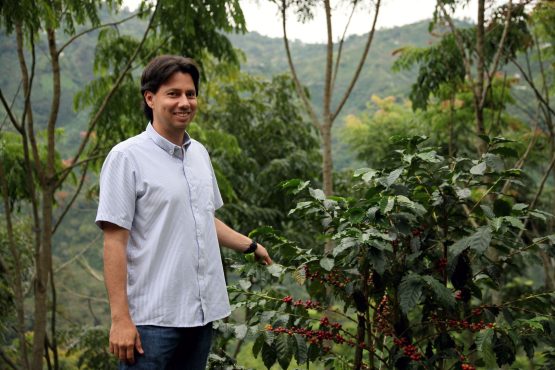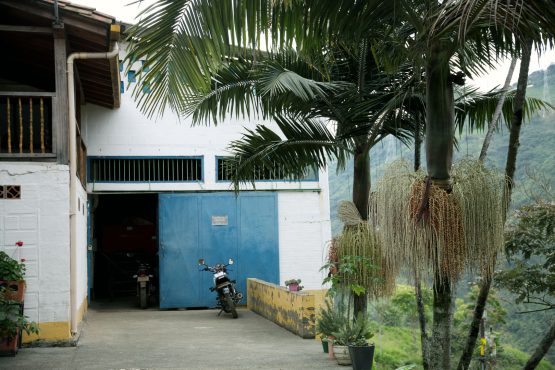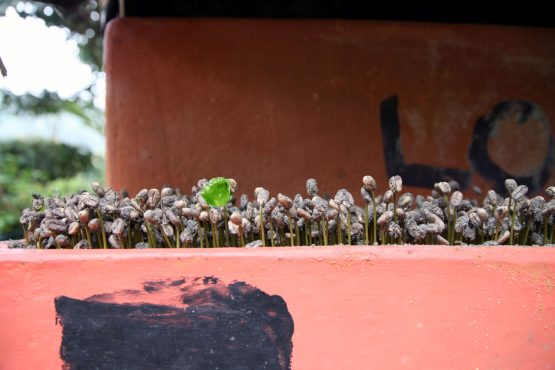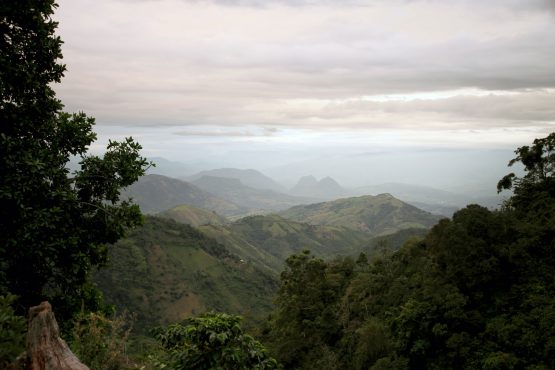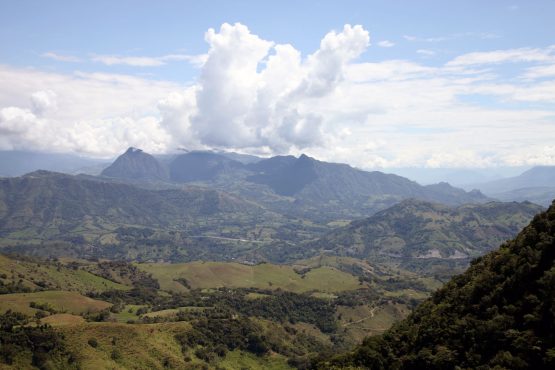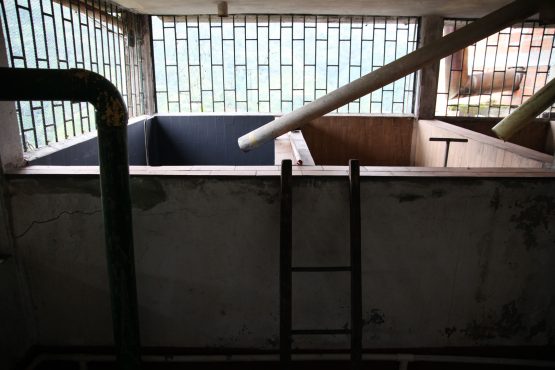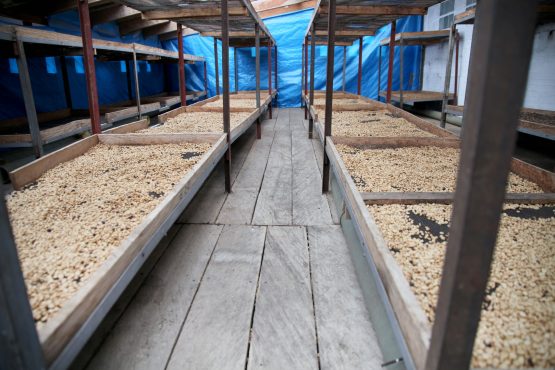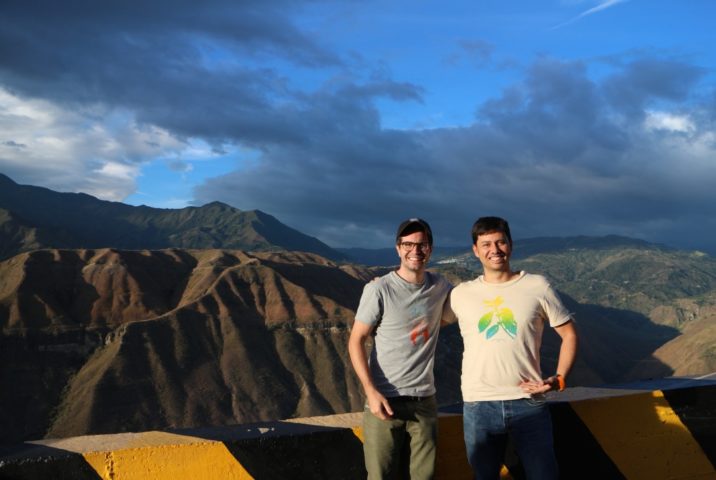El Jardín Chiroso
Intensely sweet and distinct. Blackcurrant, wine gums and yellow peach, with lingering tea-rose aromatics.
This 100% Chiroso micro-lot was grown and processed at Finca El Jardín, which translates to ‘the garden’ in Spanish. The property, previously known as Finca La Palma, was once part of Pergamino founders the Echavarría family’s Santa Bárbara Estate, but is now owned by the company’s Director of Coffee Léo Henao and wife Jenny. This stunning property is located in the municipality of Santa Barbara, in Colombia’s state of Antioquia. The farm is 67-hectares in size (15 under coffee) and sits at a staggering 1,950 – 2,050m above sea level, with rich volcanic soil and abundant water sources that contribute to excellent productivity — even at such a high elevation.
Léo has had a long career in coffee, having spent most of his adult life working at farms, mills, quality assurance and as a coffee buyer across Colombia’s growing regions. He also holds a Masters degree in fermentation science, and has shared most of that knowledge with the numerous producers he has worked with. In collaboration with his brother Felipe and close friend Jorge Cuéllar, Leo’s previous farm, Los Palomos (located in Urrao, Antioquia), went on to earn first place in Colombia’s 2020 Cup of Excellence competition with a lot named ‘Los Tres Mosqueteros’ — “The Three Musketeers” in Spanish — in reference to the trio’s adventurous spirit. Unfortunately, due to security concerns and the long travel required to reach the property from the city of Medellín, where Léo and his family live, the farm was sold in 2022.
Knowing Léo was still passionate about agriculture and fermentation, Pergamino’s Managing Director (and close friend) Pedro Echavarría offered him the opportunity to purchase La Palma in 2024, as the property has its own wet mill and drying facilities on site, and can run independently of Santa Barbara Estate. Léo graciously accepted the offer, and renamed the farm to El Jardín, in reference to the garden of Greek philosopher Epicurus, a place where knowledge was freely shared by the ancient Athenians.
As such, Léo sees El Jardín as the continuation of what he first started at Los Palomos: a place where he can continue learning about and experimenting with coffee fermentation, and where he can grow and test the suitability of rare varieties with unique flavour profiles. Currently, El Jardín is planted with several varieties: the rust-resistant hybrid Colombia, along with high-earning varieties Chiroso, Gesha, and a small amount of SL28. By focusing on this type of experimentation at a manageable scale, Léo will be able to give specific advice, based on his own experience, to the producers he regularly meets, ensuring the broader network of growers Pergamino work with benefit from it and are able to apply what they can, to maximise the returns they get for their crop.
ABOUT THE CHIROSO VARIETY
Finca El Jardín (then known as La Palma) was initially planted with Caturra, the most popular variety during the 1970s and 1980s when most local farms were established. This was replaced with the more resilient Colombia in the early 2000s, after a devastating outbreak of coffee leaf rust. However, in recent years, the higher elevations have been replanted again with Chiroso, a new variety that originated in the Urrao region of Antioquia.
The Chiroso variety was ‘discovered’ in the municipality of Urrao (also in the state of Antioquia), where it was initially thought to be a mutation of the Caturra variety, which is widely planted in the area. Chiroso was first selected and cultivated for its resilience to the cool climate of Antioquia, but eventually became recognised for its complex and floral cup profile – and the opportunity it presents in attracting higher premiums from specialty buyers. Coupled with the slow fermentation process typical to the region, this variety has resulted in some outstanding coffee lots (including Colombia’s 2020 Cup of Excellence winner) and has brought international attention to this micro-region of Colombia. More recent DNA studies done on the variety have shown Chiroso to be an Ethiopian landrace variety (similar to the famous Gesha variety), though it is still unclear how it ended up in Antioquia, Colombia.
Local farmers have distinguished two types of Chiroso variety: ‘Chiroso Caturra’, which comes from a shorter tree that produces smaller beans, similar to Caturra, and ‘Chiroso Bourbon,’ which comes from a taller tree and produces more elongated beans, similar to Bourbon. The Chiroso Bourbon was only discovered recently, during one of Pergamino’s visits to José Arcadio Caro, one of the original growers to cultivate Chiroso some thirty years ago. José relayed that every so often there were taller trees growing on his farm, with a distinct size and shape of the cherries. The team at Pergamino first isolated these trees and cultivated them on Léo’s land, Finca Los Palomos, and at Finca Lomaverde—eventually discovering that these plants produced coffees with outstanding complexity and flavour. Today, they have distributed them with several producers who are part of their Allied Producing Program, including Neftalí Castro and Edward Sandoval, both in Tolima, and Jorge Cuéllar, who also farms in Antioquia.
ABOUT ANTIOQUIA
Antioquia is located in central northwestern Colombia. Coffee was introduced to the region in the latter part of the 19thcentury. Since then, this mountainous, fertile department has 128,000 hectares of coffee that is produced by a mix of large estates and tiny farms.
Antioquia only recently became more accessible to specialty coffee buyers – largely thanks to a transformation of the department led by Sergio Fajardo, who was the governor of the department between 2012-2016. Sergio transformed Antioquia’s capital city, Medellín, from a violent and dangerous place to a world-class tourist destination with a strong economy. Coffee has played a significant role in this this transformation, and as access to many producers has improved, the region has become one of Colombia’s most important and celebrated coffee-producing areas.
Our export partners for this coffee, Pergamino, have worked hard commercialise specialty-grade coffee throughout Antioquia, and have uncovered some stunning coffees and very dedicated producers in the process. They work closely with the producers to give them feedback on their coffees (provided by Pergamino’s expert team of cuppers) and provide top up payments when the coffee is sold at a higher premium.
Head here to learn more about the work of Pergamino and Léo’s role within the business.
HOW THIS COFFEE WAS PROCESSED
The coffee was selectively hand-harvested and then transported to El Jardín’s onsite wet mill. On arrival, cherries spent up to 48 hours fermenting in cherry form, depending on the degree of ripeness identified during the picking. Cherries were then carefully pulped, to minimise the amount of water used, and then left to ferment for up to 72 hours, in the absence of light. Léo believes these dark conditions have an impact on cup quality, as microorganisms that catalyse fermentation are better able to flourish when they’re not exposed to full light. During this period, freshly picked cherry was pulped and added to the mix, lowering the overall pH level and – along with the cooler temperatures – allowing for an extended fermentation process with little risk for spoilage, and contributing to a vibrant, winey acidity in the coffee’s cup profile.
Parchment was then washed and laid out to dry in the sun for three to four days, until it reaches 28-30% moisture content. Beans were then transferred to El Jardín’s silos, where they finished drying in greenhouse conditions. The slow and steady drying ensured even moisture loss and stable water activity. After the parchment was fully dried to the optimal humidity, it was delivered to Pergamino’s dry mill in Medellín for assessment, storage, and export preparation.
